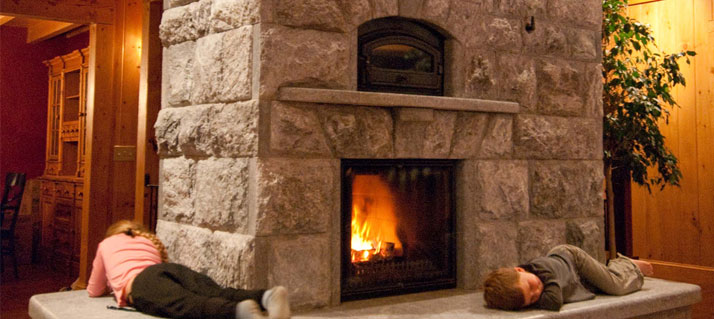I met up with some acquaintances at the grocery store last night, and we immediately started talking about the weather “ it’s been cold lately, a storm is on its way, or so the local weathermen say (followed immediately by a skeptical raising of eyebrows and unanimous chuckle). Then the conversation transitioned nicely into work and family, and to not miss the great deal on haddock a few rows down.
I’m pretty sure talking about the weather is something we have in common with people all over the world. In which case, we feel very lucky to be in the industry we’re in. As you can imagine, we always have something to talk about “ especially during the peak of winter.
One topic of discussion we wanted to open up to our readers is whether or not a masonry heater can or should be built in a basement, and if that is the most efficient place for any wood heat source. As we understand, this is often done with wood stoves in order to save space, and keep wood debris, dust and fuel out of main living areas. Wood stoves, however, work much differently than masonry heaters.
When I was first approached by the idea, I initially cringed at the thought. I haven’t known many basements in my life, but the one I grew up with under my parents farmhouse was and will always be one of the creepiest places I’ve ever been in “ the ceilings were incredibly low, cobwebs hung from each rafter, and spiders thrived in the damp environment. Being almost 6 feet tall, going down there to turn on the hot water heater was my definition of pure terror, not to mention when my big brother would accidently close and lock the door behind me.
However, my personal experience aside, we don’t advise building a heater in your basement (unless you spend a lot of your time there) for many legitimate reasons, and I’ll explain why.
Masonry heaters are a radiant heater, unlike a regular wood stove, the heat is gentle and moves by a passive convection flow created by the interior contraflow design. This means, once a fire is established in the firebox, smoke and flame then travels up the central fire tube core to the top of the heater. Once it reaches the top of the heater, it separates evenly and travels down both sides of the heater walls, cooling as it falls.
At any level along the face of the heater, the difference between the heating room temperature and the temperature of the cooling gases within the heater are the same. This cycle creates a gentle, balanced airflow in the room “ also known as radiant heat. If you stand next to the heater or ten feet away from it, the heat is the same.
For maximum efficiency in terms of heating your home, we always recommend building your heater in the main living area. Building a heater in your basement essentially disrupts this natural heat cycle. The radiant heat will disperse itself through the basement but must have a large enough path to the main living space to allow both warm air to rise and cool air to return to the basement. This is most often times incredibly difficult to achieve.
The ideal layout for efficient heat distribution is installing your wood heat source on the main floor of your home. By utilizing this layout, the lower and upper levels of the house do naturally stay a bit cooler, but for most, cooler bedrooms and basements are actually preferred.
Aesthetics are also a key factor in why we advise building a masonry heater in the center of your home. Each heater is designed to be beautiful inside and out, and are meant to be enjoyed as a place for gathering, warmth and comfort.
Masons can be pretty creative when it comes to building a heater within existing architecture that on the surface may seem insufficient. To find out what your options are, feel free to contact us and we’d be happy to help you determine the most efficient way of heating your home.




